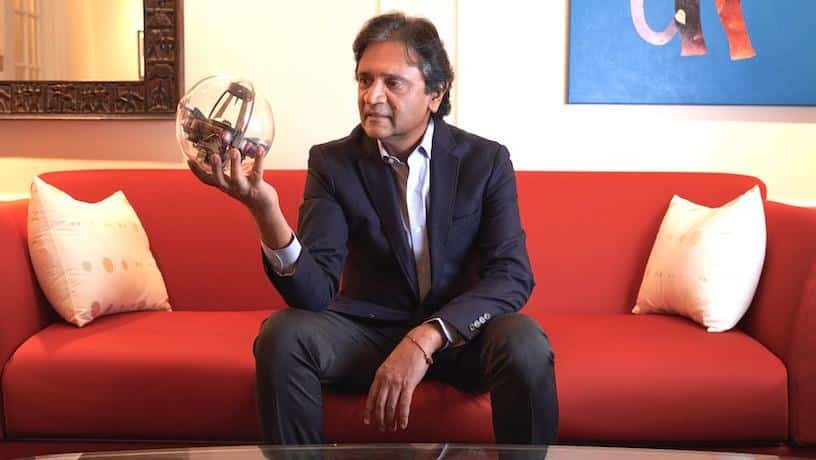
ECE Alum, Shree Nayar, awarded Okawa Prize for contributions to digital photography
ECE Alum, Shree Nayar, has changed the way visual information is captured and used by both machines and humans. He is honored with 2022 Okawa Prize.
January 5, 2023 ![]() Isabella Mormando
Isabella Mormando
Shree K. Nayar, the T. C. Chang Professor of Computer Science at Columbia Engineering, has been awarded the prestigious Okawa Prize from the Okawa Foundation of Japan for his seminal work on computer vision and computational imaging. Nayar is being recognized for “the invention of innovative imaging techniques and their widespread use in digital photography and computer vision.” He will receive the prize at a ceremony to be held in Tokyo, Japan, in March 2023.
“I am grateful to the Okawa Foundation for this honor,” said Nayar, who directs Columbia’s Computational Imaging and Vision Laboratory. “Over the last three decades, I have had many close and productive collaborations with Japanese researchers and companies. These have enabled my laboratory to translate our results into imaging technologies that are currently being used in consumer devices and factory automation systems. These collaborations have led to personal and professional relationships with a number of gifted researchers in Japan that have had special meaning to me.”
The Okawa Prize has been awarded every year since 1992. Until 1995, it was awarded to only one Japanese scientist every year. From 1996, the prize honors two scientists—one Japanese and one international candidate. The Japanese recipient of the 2022 prize is Dr. Chieko Asakawa, an IBM Fellow who is being recognized for her work on accessibility.
Nayar graduated in electrical engineering from the Birla Institute of Technology, Mesra, and completed his Master’s in electrical engineering in 1986 from North Carolina State University. He then took forward his research at The Robotics Institute, Carnegie Mellon University, for three years before joining Hitachi as a visiting research scientist for a year. In 1990, he was awarded a Ph.D. by Carnegie Mellon University, following which he moved to Columbia University, where he continues to work.
Nayar’s work has changed the way visual information is captured and used by both machines and humans. In the mid-1990s, he pioneered the field of computational imaging, which combines unconventional optics with advanced image processing algorithms to produce immersive and interactive visual information. Based on this paradigm, Nayar and his collaborators developed novel cameras for omnidirectional imaging, depth imaging, giga-pixel imaging, and high-dynamic-range imaging.
Nayar’s idea of creating assorted pixels for high-dynamic-range (HDR) imaging has enabled smartphone cameras to leapfrog in terms of the quality of the photos they capture. It is estimated that more than one billion smartphone users worldwide are using his technology on a daily basis. In 2017, Popular Photography magazine published a profile of Nayar in which he was credited for “transforming the camera in your pocket.”
A second major focus of Nayar’s work is to understand how light interacts with the physical world. His models for surface reflection, interreflection, texture, and atmospheric scattering are used by both researchers and practitioners in computer vision, graphics, and other fields. Nayar’s inventions related to active illumination methods for measuring 3D shapes of objects are widely used for visual inspection and factory automation.
Among many other awards, Nayar has received the David Marr Prize twice (1990 and 1995), the David and Lucile Packard Fellowship in 1992, the National Young Investigator Award in 1993, the NTT Distinguished Scientific Achievement Award in 1994, the Keck Foundation Award for Excellence in Teaching in 1995 and the Columbia Great Teacher Award in 2006.
He has also been elected to the American Academy of Arts and Sciences, the National Academy of Inventors and the Indian National Academy of Engineering. In February 2008, at the young age of 45, he was elected to the National Academy of Engineering—the highest honour for an engineer in the United States.
